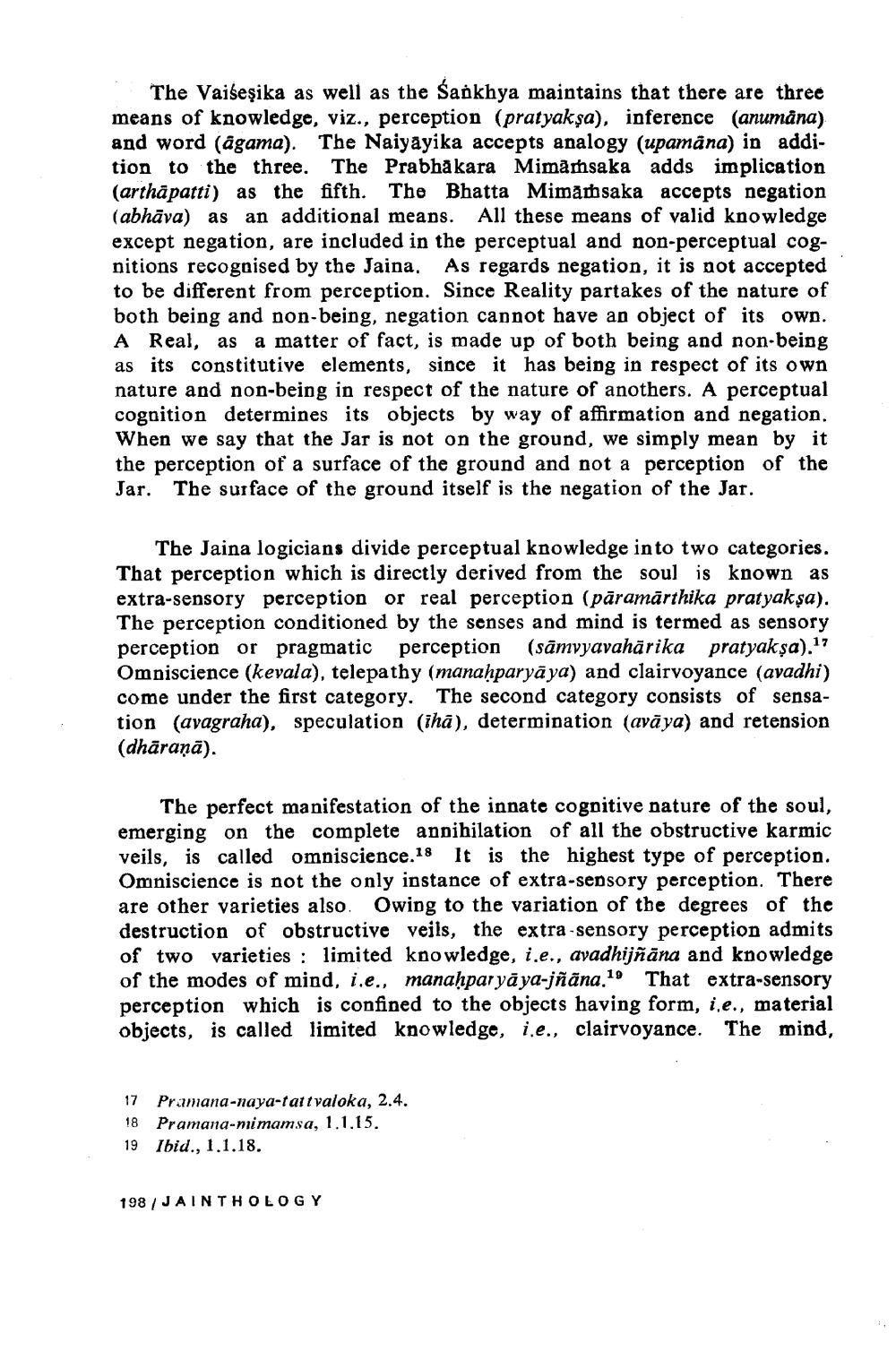________________
The Vaiseşika as well as the Sankhya maintains that there are three means of knowledge, viz., perception (pratyakşa), inference (anumana) and word (agama). The Naiyayika accepts analogy (upamāna) in addition to the three. The Prabhakara Mimamsaka adds implication (arthāpatti) as the fifth. The Bhatta Mimamsaka accepts negation (abhāva) as an additional means. All these means of valid knowledge except negation, are included in the perceptual and non-perceptual cognitions recognised by the Jaina. As regards negation, it is not accepted to be different from perception. Since Reality partakes of the nature of both being and non-being, negation cannot have an object of its own. A Real, as a matter of fact, is made up of both being and non-being as its constitutive elements, since it has being in respect of its own nature and non-being in respect of the nature of anothers. A perceptual cognition determines its objects by way of affirmation and negation. When we say that the Jar is not on the ground, we simply mean by it the perception of a surface of the ground and not a perception of the Jar. The surface of the ground itself is the negation of the Jar.
The Jaina logicians divide perceptual knowledge into two categories. That perception which is directly derived from the soul is known as extra-sensory perception or real perception (pāramārthika pratyakṣa). The perception conditioned by the senses and mind is termed as sensory perception or pragmatic perception (sāmvyavahārika pratyakṣa).17 Omniscience (kevala), telepathy (manaḥparyaya) and clairvoyance (avadhi) come under the first category. The second category consists of sensation (avagraha), speculation (iha), determination (avāya) and retension (dhāraṇā).
The perfect manifestation of the innate cognitive nature of the soul, emerging on the complete annihilation of all the obstructive karmic veils, is called omniscience.18 It is the highest type of perception. Omniscience is not the only instance of extra-sensory perception. There are other varieties also. Owing to the variation of the degrees of the destruction of obstructive veils, the extra-sensory perception admits of two varieties: limited knowledge, i.e., avadhijñāna and knowledge of the modes of mind, i.e., manaḥparyāya-jñāna.19 That extra-sensory perception which is confined to the objects having form, ie., material objects, is called limited knowledge, i.e., clairvoyance. The mind,
Pramana-naya-tattvaloka, 2.4.
17
18 Pramana-mimamsa, 1.1.15.
19
Ibid., 1.1.18.
198/JAINTHOLOGY




